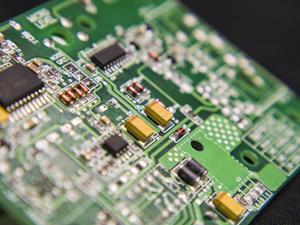
Six engineering feats that changed the world
Engineers transform ideas into reality. They’ve shaped our past and present and will design how our future works and looks. Here some of National Grid’s senior leadership team choose the engineering innovations they believe have had a positive impact on our world to date and explain why.
1. The transistor
Chosen by John Pettigrew, CEO, National Grid.
Image

This is the single feat of engineering that I believe has changed the world for the better. Why? Because the modern world is underpinned and driven by it. The transistor impacts every area of our lives from work to leisure, travel to the home. Without the invention of the transistor at Bell Labs in 1947, and the colossal miniaturisation and optimisation effort that followed, there would be no smart phones, internet, sat nav or pretty much any other electrical device you can think of. In our own business, the power system would not be possible without them. Looking forward, transistors will be essential in delivering the energy transition to a net zero economy; from coordinating the output from wind farms to managing energy efficiency programmes and enabling the switch to electric transport. |
2. The SpaceX Dragon spacecraft
Chosen by David Wright, Group Chief Engineer.
Image

Closer to home, it’s incredible what Tesla has done with electric cars and the rest of the industry is still chasing their inspirational hardware and software. It’s the same with the iPhone; forcing the rest of the market to play catch-up. Sometimes it’s not about the first technology, but the first that captures the hearts and minds of consumers and shows the future. |
3. Incandescent light
Chosen by Nicola Shaw CBE, President, UK Networks.
Image

Many people think Thomas Edison invented the light bulb. To be a bit more precise, he built on the work of many others – including a trio of British chemists called Humphrey Davy, Warren de La Rue and Joseph Swan – to invent the first incandescent light that was practical and able to provide illumination for hours and hours. It would become one of the first applications of electricity in modern life. From enabling a few privileged customers in New York to light their homes in 1882, Edison would go on to open the United States’ first central power plant in lower Manhattan and create a process that would become the model for the entire power generation industry. Through reliable electricity, Edison was instrumental in improving living conditions, enabling safer heat and light in homes and offices, and laying the foundations for how we breathe life into our modern digital world. In short, he introduced people to an entirely new type of energy and transformed electricity from a science experiment into safe and affordable luxury for all. |
4. The canal system
Chosen by Jon Butterworth, President, UK Gas Transmission.
Image

Without this engineering triumph, our United Kingdom could never have been what it is today. The canal system shows great vision, joined up thinking, collaboration and engineering endeavour. |
5. The space rocket Saturn V
Chosen by Phil Sheppard, Past President, Gas Transmission.
Image

About 18 metres higher than the Statue of Liberty, it had five rockets helping to send the mission out into orbit, propelling the crew at speeds of around 7km per second. The pump component inside each rocket generated 41MW, more power than one of our entire compressor stations, which tend to be the size of a football pitch. It was also very safe, despite all the fuel, power and speed generated – it launched 13 times from Kennedy Space Center, with no loss of crew or payload. |
6. Semi-conductors
Chosen by Roisin Quinn, Director of Customer Connections.
Image
It’s really tough to just pick one! I’ve always been fascinated by magnets, electro magnets and electricity generation. However, my single feat of engineering would be understanding semi-conductors and their potential. This has unlocked the development of so much of the technology we all now take for granted – like PCs, laptops and mobile phones – and is also key to renewable generation and our low carbon future. |



